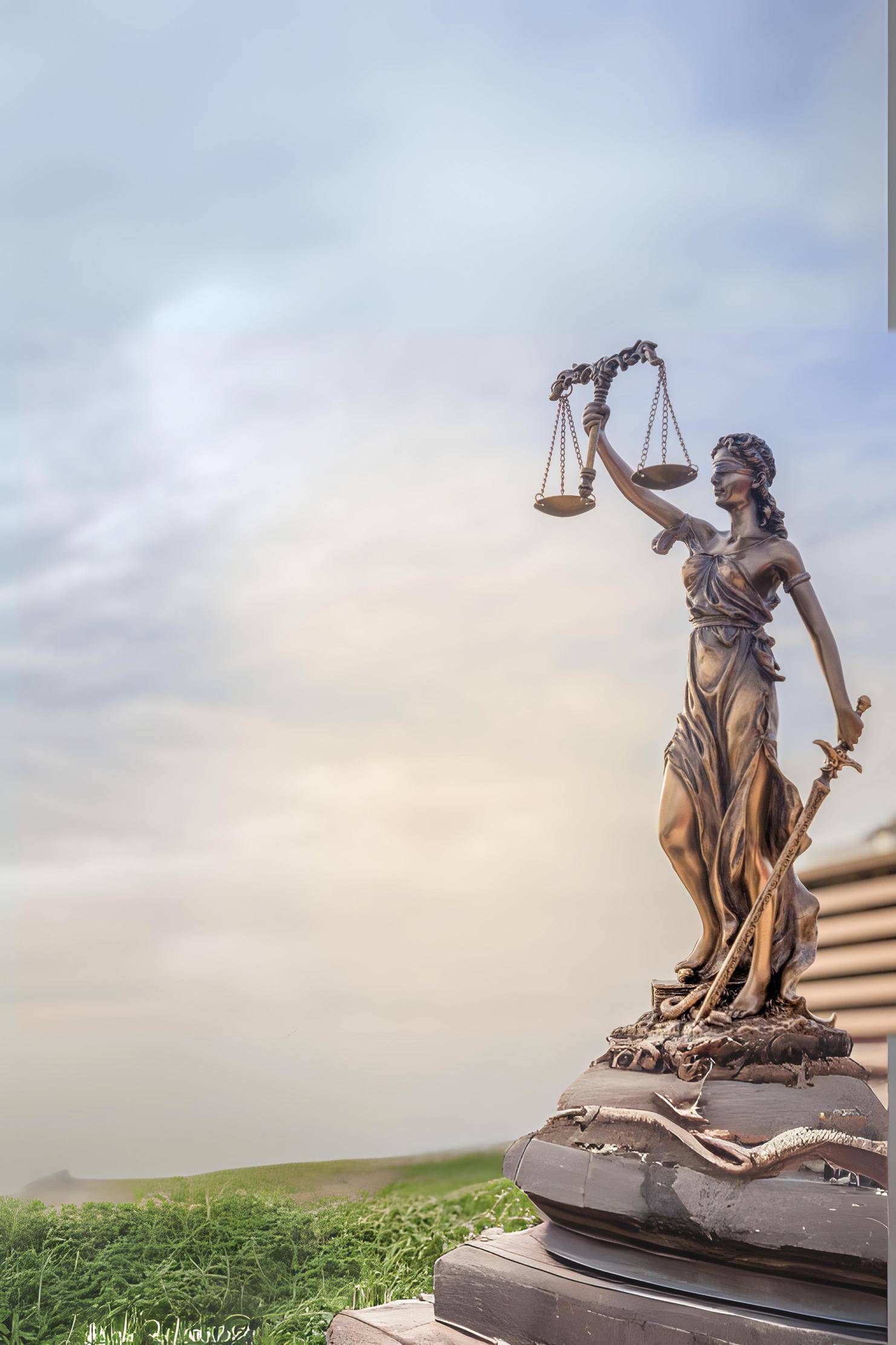JUDGING PANEL
NICOLE KAR PARTNER
PAUL WEISS
NICOLE KAR PARTNER PAUL WEISS
Nicole Kar is global co-chair of the Antitrust Practice. She advises on global merger investigations from an antitrust and foreign investment standpoint and has led over 40 significant merger reviews before the UK and European authorities; as well as advising on cartel, abuse of dominance and consumer law investigations and consequential litigation, particularly in the UK’s Competition Appeal Tribunal; compliance issues; and self-reporting to financial and other regulators.
Nicole Kar is global co-chair of the Antitrust Practice. She advises on global merger investigations from an antitrust and foreign investment standpoint and has led over 40 significant merger reviews before the UK and European authorities; as well as advising on cartel, abuse of dominance and consumer law investigations and consequential litigation, particularly in the UK’s Competition Appeal Tribunal; compliance issues; and self-reporting to financial and other regulators.
JOHN MESSENT COUNSEL CLEARY GOTTLIEB
JOHN MESSENT COUNSEL CLEARY GOTTLIEB
John Messent’s practice covers all aspects of UK and EU competition law, as well as rules on national security and investment screening. He has represented clients before the European Commission, the Competition and Markets Authority, and UK sectoral regulators, as well as before the EU and UK Courts. John was seconded in 2013 to the Policy department of the Office of Fair Trading, working on guidance documents to be published by the new Competition and Markets Authority (including on mergers, Competition Act investigations, and criminal cartel prosecutions). He became counsel in 2024.
ELAINE WHITEFORD
PARTNER. ANTITRUST & COMPETITION
ELAINE WHITEFORD
WILLKIE FARR & GALLAGHER
PARTNER. ANTITRUST & COMPETITION WILLKIE FARR & GALLAGHER
Elaine Whiteford has over 20 years' experience of contentious EU, Competition and Regulatory work, specialising in follow-on damages litigation, challenges to regulatory decisions, cartel investigations and threatened disputes. Elaine also has extensive experience in relation to regulatory investigations conducted by the European Commission and other competition regulators.
Elaine Whiteford has over 20 years' experience of contentious EU, Competition and Regulatory work, specialising in follow-on damages litigation, challenges to regulatory decisions, cartel investigations and threatened disputes. Elaine also has extensive experience in relation to regulatory investigations conducted by the European Commission and other competition regulators.
John Messent’s practice covers all aspects of UK and EU competition law, as well as rules on national security and investment screening. He has represented clients before the European Commission, the Competition and Markets Authority, and UK sectoral regulators, as well as before the EU and UK Courts. John was seconded in 2013 to the Policy department of the Office of Fair Trading, working on guidance documents to be published by the new Competition and Markets Authority (including on mergers, Competition Act investigations, and criminal cartel prosecutions). He became counsel in 2024.
STEPHEN WISKING PARTNER
ANDREW LEITCH PARTNER
BRYAN CAVE LEIGHTON PAISNER
ANDREW LEITCH PARTNER
Andrew has significant experience in competition litigation, having acted for both claimants and defendants in disputes arising out of price fixing cartels, in addition to advising on litigation concerning abuse of dominant positions in marketplaces. Andrew has experience of litigating disputes in various courts in the U.K., including the High Court of Justice, the Competition Appeal Tribunal and the Court of Appeal. He has advised clients in a range of regulated and non-regulated industry sectors, including industrial manufacturers, financial institutions and technology companies.
BRYAN CAVE LEIGHTON PAISNER
Andrew has significant experience in competition litigation, having acted for both claimants and defendants in disputes arising out of price fixing cartels, in addition to advising on litigation concerning abuse of dominant positions in marketplaces. Andrew has experience of litigating disputes in various courts in the U.K., including the High Court of Justice, the Competition Appeal Tribunal and the Court of Appeal. He has advised clients in a range of regulated and non-regulated industry sectors, including industrial manufacturers, financial institutions and technology companies.
HERBERT SMITH FREEHILLS
STEPHEN WISKING PARTNER
HERBERT SMITH FREEHILLS
Stephen has over 20 years' experience and has been involved in a significant number of landmark competition and regulatory cases at EU and UK level. He specialises in all aspects of EU and UK competition law, including merger control, cartels and abuse of dominance cases, market investigations, competition disputes and strategic advice. Stephen advises clients across a broad range of sectors including financial services, media (particularly broadcasting), telecoms, energy, pharmaceuticals and professional services.
Stephen has over 20 years' experience and has been involved in a significant number of landmark competition and regulatory cases at EU and UK level. He specialises in all aspects of EU and UK competition law, including merger control, cartels and abuse of dominance cases, market investigations, competition disputes and strategic advice. Stephen advises clients across a broad range of sectors including financial services, media (particularly broadcasting), telecoms, energy, pharmaceuticals and professional services.
THE DMA AND DMCC HAVE INTRODUCED EX ANTE REGULATORY FRAMEWORKS FOR SOME TECHNOLOGY BUSINESSES WHICH ARE INTENDED TO COMPLEMENT AND SUPPLEMENT COMPETITION LAW.
HOW WILL THIS LEGISLATION IMPACT PRIVATE ENFORCEMENT AND INTERACT WITH AND IMPACT UPON PUBLIC ENFORCEMENT OF CONDUCT IN THE DIGITAL WORLD?
Authored by: Lucy Watkiss (Associate) - Linklaters
The Digital Markets Act (the “DMA”) came into force on 1 November 2022 and introduced an ex ante regulatory framework with the aim of making digital markets “fairer and more contestable”.1 The DMA regulates the activities of a small group of companies providing “core digital platform services” that have been designated as “gatekeepers”.2 Many of the obligations with which gatekeepers must comply are inspired by previous competition enforcement cases in the digital sector, and therefore there is a high degree of complementarity between the enforcement of the DMA and competition enforcement under Articles 101 and 102 of the Treaty on the Functioning of the European Union (“TFEU”).3 The Digital Markets, Competition and Consumer Act (the “DMCC”) was enacted on 24 May 2024 to give the UK Competition and Markets
Authority (the “CMA”) (specifically its new digital markets unit (the “DMU”)) similar powers to regulate firms with ‘strategic market status’ (“SMS”).4 It is anticipated that a similarly narrow group of firms will be designated on account of having “substantial and entrenched market power” and “a position of strategic significance” in relation to digital activities in the UK.5 Each SMS firm will have to comply with tailored conduct requirements, notify mergers to the CMA and could be made subject to pro-competitive interventions.
Despite the overlap between the subject matter of these new regulatory frameworks and existing competition law powers, EU and CMA officials have emphasised that the DMA and DMCC are not intended to replace existing competition law. Speaking at the ‘Competition Law Thinking in Times of Change’ conference in November 2024, Linsey McCallum confirmed that “The DMA has not been introduced because of the failure of Article 102. Competition law is helpful for punctual intervention in markets. If we’re seeing the same conduct from the same companies, then there is a need for ex ante rather than ex poste regulation.”6 At the same event, Chris Prevett described “an ongoing role for traditional competition enforcement tools”, noting “the DMCC is not intended to cut across the existing toolkit.”7
1 Regulation (EU) 2022/1925 of the European Parliament and of the Council of 14 September 2022 on contestable and fair markets in the digital sector and amending Directives (EU) 2019/1937 and (EU) 2020/1828 (Digital Markets Act) [2022] OJ L265, Recital 7.
2 DMA, Article 3.
3 Cases which appear to have inspired conduct obligations set out in Articles 5 and 6 DMA include Google Search (Shopping) (case AT.39740) and Apple App Store Practices (case AT.40716).
4 Digital Markets, Competition and Consumers Act 2024, Chapter 2.
5 DMCC, s 5 and s 6.
6 Linsey McCallum, Deputy Director General, DG Competition, European Commission, ‘Reforming Article 102 TFEU’ (Speech at the Competition Law Thinking in Times of Change: A Conference in Honour of Valentine Korah, University College London, 5 November 2024).
7 Chris Prevett, General Counsel, UK CMA, ‘The transformation of UK Competition Law: 1956 – 2024’ (Speech at the Competition Law Thinking in Times of Change: A Conference in Honour of Valentine Korah, University College London, 5 November 2024).
The DMA recitals state that the regulation aims to protect a “different legal interest” from that protected by competition rules and “should apply without prejudice to their application.”8 It is envisaged that the DMA will work in parallel with existing competition tools but serve a different, more narrow regulatory purpose. It is more challenging to distinguish between the framework introduced by the DMCC and the CMA’s existing competition enforcement powers under Chapters 1 and 2 of the Competition Act 1998 (“CA98”). The DMU will sit within the CMA, whereas the DMA is administered by a joint DG Comp and DG Connect taskforce.
The CMA describes the provisions of the DMCC as inherently tied to ensuring competition in digital markets, unlike the DMA, which has been pitched by EU officials as sectoral regulation transforming digital markets into a regulated sector.9
Both regimes are in relative infancy. To date, seven gatekeeper designation decisions have been taken under the DMA.10 The first SMS designations under the DMCC are not anticipated until mid-to-late 2025.11 It remains to be seen how these regulatory frameworks will interact with traditional public and private competition enforcement but it is possible to make some predictions:
1. The new frameworks will likely cannibalise some of the work previously undertaken under existing competition enforcement tools.
2. The new frameworks provide powers for enforcing against noncompliance and there is at least the prospect of parallel enforcement against the same behaviour via different regulatory tools in different jurisdictions.
8 DMA, Recital 11.
3. Traditional competition enforcement tools will continue to play a role in regulating the digital sector at large, because the DMA and DMCC provisions only apply to the largest digital companies and, with respect to the DMA, a narrow set of conduct obligations.
4. Third parties can enforce their rights under the DMA and DMCC through stand-alone or followon private damages actions which could lead to more private enforcement against digital companies and risk causing some regulatory divergence.
requirements for SMS firms will be tailored, designed in collaboration with SMS firms and can be easily updated (more so than the obligations of the DMA specified in Articles 5 – 7) as digital markets evolve.13
From Ex Poste To Ex Ante
The DMA and DMCC mark a shift from ex poste to ex ante regulation of large firms operating in the digital sector. Both the Commission and CMA have emphasised the importance of engaging with designated firms in order to ensure these frameworks achieve their stated aims and best ensure compliance. This marks a change in tone and scope, as competition investigations focus on specific behavioural infringements and are adversarial in nature. EU official Filomena Chirico contrastingly described the DMA as “a new generation of regulation” and explained that having introduced an ex ante regulation, the Commission hopes to monitor compliance rather than investigate non-compliance.12 The CMA has similarly emphasised the flexible nature of the DMCC encouraging compliance, noting that conduct
Cracking Down On Non-Compliance
The aspiration for compliance as the default position, if successful, could reduce the need for ex poste competition enforcement relating to the types of conduct covered by the DMA and SMS firms’ codes of conduct. However, the modifications required to comply with a DMA obligation or DMCC conduct requirement might not align with a company’s commercial incentives. Under the DMA, gatekeepers must decide how to comply with conduct obligations and the Commission can investigate and fine a gatekeeper if it finds that it is not meeting the requisite standard.
There are already live DMA non-compliance cases against Alphabet, Apple and Meta.14 Equally, there may be some cases where rather than adapting to comply, gatekeepers and SMS firms decide to switch off the offending functionality in the relevant jurisdiction, which could degrade consumer experience.
9 ‘Overview of the CMA’s provisional approach to implement the new Digital Markets competition regime’, CMA policy paper, 11 January 2024, paragraph 1.2; Filomena Chirico, ‘The Digital Markets Act: From Strategy & Vision to First Non-Compliance Cases’ (3 June 2024) <https://www.youtube.com/watch?v=tZifM79e9iI> accessed 27 November 2024; Denis Sparas, ‘Digital Markets Act – First Wave of Cases, First Assessment’ (23 January 2024) <https://www.youtube.com/watch?v=qtPuwAXLJJc> accessed 27 November 2024.
10 Alphabet, Amazon, Apple, ByteDance, Microsoft, Meta and Booking have been designated as gatekeepers.
11 Under Digital Markets, Competition and Consumers Act 2024 (Commencement No. 1 and Savings and Transitional Provisions) Regulations 2024, Part 1 (Digital Markets) of the DMCC will have effect as of 1 January 2025.
12 Filomena Chirico, ‘The Digital Markets Act: From Strategy & Vision to First Non-Compliance Cases’ (3 June 2024) <https://www.youtube.com/watch?v=tZifM79e9iI> accessed 27 November 2024.
13 ‘Digital markets competition regime guidance’, CMA guidance, draft published for consultation on 24 May 2024, paragraph 3.33; Chris Prevett, General Counsel, UK CMA, ‘The transformation of UK Competition Law: 1956 – 2024’ (Speech at the Competition Law Thinking in Times of Change: A Conference in Honour of Valentine Korah, University College London, 5 November 2024).
14 The European Commission, ‘Commission opens non-compliance investigations against Alphabet, Apple and Meta under the Digital Market Act’ (25 March 2024).
One criticism of traditional competition enforcement against digital companies is that the fines imposed following investigations fail to act as a deterrent and are perceived as the ‘cost of doing business’. Both the EU and UK authorities have bolstered their powers. Under the DMCC, the CMA can issue penalties for infringements of pro-competition orders and conduct requirements, and for failing to comply with investigative requirements.15 Fines of up to 20% of annual worldwide turnover can now be issued for repeat violations of the DMA and the Commission may implement proportionate behavioural or structural remedies.16 Both authorities appear to be encouraging a culture of compliance through designing ex ante frameworks, whilst ensuring the regimes can bite in instances of non-compliance.
Possible Parallel Enforcement
Whilst pursuing “a different legal interest”, the DMA’s subject matter inherently overlaps with existing competition law, in particular Article 102 TFEU, and raises the prospect of parallel enforcement by the Commission (under the DMA) and national competition authorities (under traditional tools). In recognition of this risk, the DMA includes some protections. Article 40(5) established a “high-level group” of European digital regulators, to act as a forum for discussion and cooperation.17 Under Article 38, “the Commission and the national competent authorities of the Member States [enforcing Articles 101 and 102 TFEU] shall cooperate […] through the European Competition Network”. National competition authorities must inform the Commission of any competition investigations into the behaviour of gatekeepers and notify it of any obligations they intend to impose on the gatekeepers in advance of doing so.18 As there is at least the possibility of duplicative regulatory proceedings, multiple commentators have raised an additional question concerning whether such parallel enforcement is compatible
with gatekeepers’ fundamental rights, as parallel enforcement may be incompatible with the principle of ne bis in idem.19
Traditional Tools Will Fill The Gaps
Whilst the DMCC is potentially broad in scope, both the DMA and DMCC are narrow in expected application. They apply to a small group of large companies with a high degree of market power in the digital sector. Even with the DMA and DMCC in operation, Article 102 TFEU and Chapter 2 CA98 will remain the primary ways to regulate the behaviour of companies which operate in digital markets but do not meet the gatekeeper or SMS designation criteria, in addition to companies active in nondigital markets.
Digital markets evolve rapidly and the comparatively slow process through which new legislation is enacted means that the DMA risks quickly becoming outdated. For example, the DMA does not expressly cover artificial intelligence, which has become a priority for competition regulators.20 Articles 5 – 7 of the DMA set out a list of prescriptive rules imposed on gatekeepers, which are defined narrowly; they relate to specific behaviours connected with the core platform services for which a gatekeeper has been designated.21 The more open-ended, flexible Article 102 TFEU can be used to enforce against new, innovative examples of abuse.
It may be needed by the Commission to fill the gaps and investigate behaviours which carefully navigate around the types of conduct specified in the DMA but still threaten competition and (to the degree they overlap) fairness and contestability in digital markets.
The DMCC has in-built flexibility as new conduct requirements can be introduced. This has important implications for how much the CMA will continue to enforce under CA98 in digital markets, as the DMCC provides very broad powers to introduce new rules for any digital activity.
Trailblazing UK Private Enforcement
In the UK, individuals can already enforce their rights under Chapters 1 and 2 CA98 at the UK Competition Appeals Tribunal (the “CAT”) and many private damages actions take the form of Chapter 2 CA98 abuse of dominance claims alleging innovative forms of abuse against digital companies.22
If the new frameworks are successful in introducing a culture of compliance, theoretically, there should be fewer infringements and opportunities to bring private damages claims. However, third parties can enforce their rights under
15 ‘Digital markets competition regime guidance’, CMA guidance, draft published for consultation on 24 May 2024, paragraph 8.6; DMCC, s 87.
16 DMA, Article 30(2), Recital 75.
17 DMA, Article 40(5).
18 DMA, Article 38(1) – (3).
19 Arianna Andreangeli, ‘The Digital Markets Act and the enforcement of EU competition law: some implications for the application of articles 101 and 102 TFEU in digital markets’, (2022) 43 E.C.L.R 2022, 496; Assimakis Komninos, ‘The Digital Markets Act: How Does it Compare with Competition Law?’ (2022) SSRN Electronic Journal <https://papers.ssrn. com/sol3/papers.cfm?abstract_id=4136146> accessed 27 November 2024; Linklaters, ‘DMA – What’s next?’ (LinkingCompetition, June 2022) <https://www.linklaters.com/insights/ blogs/linkingcompetition/2022/june/the-dma-is-here-whats-next> accessed 28 November 2024. The principle ne bis in idem stops defendants from being tried or punished twice for the same offence.
20 On 23 July 2024, the competition authorities of the UK, EU and United States of Amercia published a joint statement on competition in generative AI foundation models and AI products.
21 DMA, Articles 5(1), 6(1) and 7(1).
22 Competition Act 1998, s 47A; Consumer Rights Act 2015, s 81, Schedule 8; Gormsen v Meta Platforms, Inc [2024] CAT 11, [2024] 2 WLUK 438; Kent v Apple Inc [2022] CAT 45, [2022] 10 WLUK 468; Coll v Alphabet Inc [2022] CAT 39, [2022] 8 WLUK 190.
both the DMA and DMCC via private enforcement if they have suffered as a result of non-compliance by a gatekeeper or SMS firm. Early noncompliance cases show that whether a gatekeeper has complied with a conduct requirement can be hotly contested and suggest that this could be an area ripe for private enforcement.
Private enforcement of the DMCC and DMA may take the form of a follow-on or stand-alone private action.23
Under the DMA, this would involve third parties enforcing rights in national courts at the EU member state level.
The DMCC and DMA are litigationfriendly but there is a risk of regulatory divergence following stand-alone claims. For example, in the UK, any person affected by a breach of a conduct requirement will be able to enforce their rights under the DMCC directly in court, even if the CMA has not made an enforcement decision with respect to the conduct. Courts could be asked to rule on provisions of the DMA and DMCC before the Commission and CMA have had the opportunity to consider the relevant provision and investigate a potential breach. Under the DMA, protections have been built-in to avoid practical conflicts between ongoing or historic public enforcement and parallel private enforcement: National courts cannot give a decision which runs counter to a decision already adopted by the Commission under the DMA and must avoid giving decisions which would conflict with a decision contemplated by the Commission.24
Conclusion
Over time it will become clear whether the DMA and DMCC introduce a shift towards successful ex ante regulation, such that, for regulating gatekeepers and SMS firms, ex poste competition tools become somewhat redundant. There are notable overlaps between the aims and remits of the DMA, DMCC and traditional competition enforcement tools. Whilst some of the potential complications have been anticipated and legislative protections introduced, the interplay between the different regulatory styles will be tested in practice and degree of potential divergence remains to be seen. As the Commission and CMA start to navigate these tools, operating in a consistent and efficient manner should be front of mind. This should help to clarify the scope of the new frameworks and provide greater legal certainty.

23 DMCC, s 101 and s 102; Giulia Rurali, Martin Seegers ‘Private Enforcement of the EU Digital Markets Act: The way ahead after going live’ (Kluwer Competition Law Blog, 20 June 2023) <https://competitionlawblog.kluwercompetitionlaw.com/2023/06/20/private-enforcement-of-the-eu-digital-markets-act-the-way-ahead-after-going-live/> accessed 2 December 2024; Linklaters, ‘Enforcement by Private Third Parties’ (The Digital Markets Act Hub) <https://www.linklaters.com/insights/publications/digital-markets-act/dma-hub/ private-enforcement> accessed 2 December 2024.
24 DMA, Article 39(5).
THE
DMA AND DMCC HAVE INTRODUCED EX ANTE REGULATORY FRAMEWORKS FOR SOME TECHNOLOGY BUSINESSES WHICH ARE INTENDED TO COMPLEMENT AND SUPPLEMENT COMPETITION LAW.
HOW WILL THIS LEGISLATION IMPACT PRIVATE ENFORCEMENT AND INTERACT WITH AND IMPACT UPON PUBLIC ENFORCEMENT OF CONDUCT IN THE DIGITAL WORLD?
Authored by: Sara Warner (Senior Associate) - Mills & Reeve
Introduction
Competition law exists to promote fair and competitive markets, typically through enforcement on an ex post basis. Due to the specific economic characteristics of digital markets, traditional competition law alone is generally considered insufficient to address the competition concerns associated with the largest digital platforms. Several jurisdictions have therefore introduced ex ante regulation, which includes the Digital Markets Act 2022 (“DMA”)1 in the European Union (“EU”) and the Digital Markets, Competition and Consumers Act 2024 (“DMCCA”)2 in the United Kingdom (“UK”).
This essay explores how the DMA and DMCCA will impact private enforcement and interact with and impact upon public enforcement of the conduct of the largest digital platforms in the EU and UK.3 It is divided into three substantive parts. Part I discusses the enforcement powers of the European Commission (“EC”) and the Competition and Markets
Authority (“CMA”) under the DMA and DMCCA, respectively.4 Part II explores the opportunities and challenges that third parties face in bringing private actions to enforce the obligations of designated firms under the DMA and DMCCA. Part III considers the risks that private enforcement poses for effective public enforcement of the DMA and DMCCA.
The essay concludes that, over time, we may see an increase in private enforcement, led by large businesses and challenger firms. However, ensuring fair and competitive digital markets ultimately requires effective cooperation and coordination as between regulators and private claimants, and between courts and regulators, at a national, EU and international level. The essay proposes that informal private enforcement in the form of stakeholder engagement in implementing the regimes has the potential to fulfil a more significant role than formal private actions. Various aspects of the digital markets competition regime under the DMCCA
arguably indicate that, in this regard, the UK may be better placed to set the standard.
I. Public Enforcement Under The DMA and DMCCA
The DMA and DMCCA both provide for the ex ante regulation of designated firms, and the monitoring and enforcement of compliance. As will be discussed, however, the two regimes differ in their approach, which varying effects on the scope for stakeholder engagement.
of this essay, ‘CMA’ is used interchangeably to refer to both the Digital Markets Unit of the CMA and the CMA more generally.
EC Enforcement Of The DMA
Since 1 November 2022, the DMA has provided for the designation of ‘gatekeepers’ of core platform services based on three main quantitative criteria.5 All ‘gatekeepers’ must comply with a pre-determined set of obligations,6 and report to the EC on their compliance.7 The EC can investigate suspected non-compliance through market investigations lasting up to 12 months,8 and in certain circumstances, impose interim measures.9
To date, the EC has designated 24 core platform services provided by seven ‘gatekeepers’ (Alphabet, Amazon, Apple, Booking, ByteDance, Meta and Microsoft),10 and has already opened noncompliance investigations into Alphabet, Apple and Meta.11 The 12-month time limit means that we can expect the outcome of these investigations much sooner than with traditional competition law investigations, which typically take a number of years.12
Speed is especially important in regulating digital markets, given the rapid rate of technological development. For the same reason, like other competition authorities, the EC will always be on the backfoot. Challenger firms and users of designated platform
services therefore represent an invaluable source of real-time market information. The DMA provides that the EC “may” consult third parties, but such consultations are not mandatory. Together with the use of quantitative criteria and a “one size fits all” approach to gatekeepers’ obligations, this indicates that the opportunities for stakeholder engagement are limited.13
outside the UK,16 which is significant given the cross-border nature of the businesses of the largest digital platforms.
The CMA must publicly consult on proposed designations, CRs and PCIs,17 and has announced that it intends to adopt a “participative” approach and engage constructively with stakeholders.18 There is hope amongst challenger firms and large business users, in particular, that this will provide genuine opportunities to contribute towards the effective enforcement of the digital markets competition regime. Although this will require the CMA to make sufficient information publicly available to enable meaningful stakeholder engagement.
CMA Enforcement Of The DMCCA
Once the digital markets competition regime comes into force on 1 January 2025,14 the CMA will have the power to designate an undertaking as having Strategic Market Status (“SMS”) in relation to a specific digital activity if, following an investigation, the CMA considers that the undertaking satisfies certain qualitative criteria.15 SMS firms must comply with bespoke Conduct Requirements (“CRs”) and Pro-Competition Interventions (“PCIs”) will enable the CMA to address specific competition concerns.
The CMA has wide-ranging information gathering powers to assist with monitoring compliance, including the ability to require information stored
II. Private Enforcement Of The DMA and DMCCA
In the absence of express provision in the DMA for third party actions, there is some debate as to the likelihood that it will lead to private enforcement.19 However, the DMA does allude to private actions in the national courts of the EU Member States within the context of cooperation between the EC and national courts.20 The German Competition Act has been amended to
5 “An undertaking shall be designated as a gatekeeper if: (a) it has a significant impact on the internal market; (b) it provides a core platform service which is an important gateway for business users to reach end users; and (c) it enjoys an entrenched and durable position, in its operations, or it is foreseeable that it will enjoy such a position in the near future.” DMA Article 3(1).
6 DMA Articles 5, 6, and 7.
7 DMA Article 11.
8 DMA Article 18(1).
9 DMA Article 24.
10 See, https://digital-markets-act.ec.europa.eu/gatekeepers_en.
11 Press release, ‘Commission opens non-compliance investigations against Alphabet, Apple and Meta under the Digital Markets Act’, 25 March 2024, available at https://digitalmarkets-act.ec.europa.eu/commission-opens-non-compliance-investigations-against-alphabet-apple-and-meta-under-digital-markets-2024-03-25_en.
12 This is exemplified by the competition law investigation into Meta, which the EC opened in June 2021 and only recently concluded. Press release, ‘Commission fines Meta €797.72 million over abusive practices benefitting Facebook Marketplace’, 14 November 2024, available at https://ec.europa.eu/commission/presscorner/detail/en/ip_24_5801.
13 A review of the EC’s practice in this area is beyond the scope of this essay.
14 Digital Markets, Competition and Consumers Act 2024 and Consumer Rights Act 2015 (Turnover and Control) Regulations 2024, para 1(2).
15 The CMA may designate an undertaking as having SMS in respect of a digital activity carried out by the undertaking where the CMA considers that: the digital activity is linked to the UK; the undertaking has a global group turnover exceeding £25bn or UK group turnover exceeding £1bn; and in respect of that digital activity, the undertaking has substantial and entrenched market power and a position of strategic significance. DMCCA section 2.
16 DMCCA sections 69(7), 71(6), 74(8) and 76(7).
17 DMCCA sections 13, 24, 49 and 54.
18 Remarks by Sarah Cardell, CEO of the CMA, delivered during the January 2024 Concurrences Tech Antitrust Conference, Palo Alto, USA, 11 January 2024, available at https:// www.gov.uk/government/speeches/the-cmas-approach-to-digital-markets-regulation.
19 See, for example, Magnus Strand, ‘Private Enforcement under the Digital Markets Act: Rights and Remedies Revisited’ (2024) Nordic Journal of European Law 2, 120-132. 20 DMA Articles 1(7) and 37-39. This is supported by the following statement on DG-Comp’s website: “This will facilitate direct actions for damages by those harmed by the conduct
strengthen private enforcement of the obligations resulting from the DMA.21 An increase in private enforcement of the conduct of the largest digital platforms in the EU is therefore possible.
By contrast, the DMCCA explicitly provides that the obligations of an SMS firm may be enforced by any person who sustains loss or damage caused by a breach.22 However, private enforcement is not without its challenges which, as the following discussion suggests, are likely to disproportionately impact individual consumers and small businesses (at least in the short-term).
Information Asymmetry
The absence of perfect information means that a third party may not have access to the information they need in order to substantiate their claim (or even know whether they could have a claim). The level of transparency in decision-making and monitoring of compliance by the EC and the CMA will therefore influence the extent of any increase in private enforcement. The requirement for the CMA to hold public consultations and its intention to adopt a “participative” approach should benefit potential claimants in the UK. Still, larger more sophisticated businesses will have an advantage over small businesses and individuals.
Legal Uncertainty
The introduction of new and complex legal provisions poses a challenge for third parties in determining whether they have a claim. The use of qualitative criteria in the DMCCA arguably poses a greater challenge for potential claimants in the UK, particularly in the absence of precedents. The CMA may assist, for instance, by providing interpretations of PCIs or information about enforcement decisions.23 In the short-term, however, the general lack of clarity around the interpretation of the provisions of the
DMCCA, and to a lesser extent the DMA, is likely to delay any increase in private enforcement.
Funding Litigation
Third parties will require specialist legal expertise in understanding whether they could have a claim under the DMA or the DMCCA. The cost of this can be substantial and possibly prohibitive for individual claimants and small businesses. Also, the limited availability of precedents will make it harder in the early years to predict the outcomes of cases, which will make it even more difficult for third parties to secure funding. For this reason, early private enforcement may be led by larger businesses and challenger firms with deeper pockets. Although there is also the possibility of collective actions.24
Strategic Considerations
Many businesses rely on the services of the largest digital platforms. As demonstrated by the various competition law investigations into Google and Amazon for example, there is a severe imbalance in bargaining power between the largest digital platforms and business users. Businesses therefore have the added consideration of the potential commercial ramifications of bringing private actions against designated firms with whom they do business. This could deter private enforcement by some businesses, but for the possibility of opt-out class actions.
III. Interaction Between Private And Public Enforcement
Proceeding on the basis that it is reasonable to expect some increase in private enforcement, even though the pace of this trend may be hindered by the various challenges faced by third parties, this poses a number of potential risks for the overall effective enforcement of the DMA / DMCCA. The interaction between private and public enforcement was relatively recently acknowledged by the CMA.25
A fundamental risk is the fragmentation of enforcement as a result of inconsistent approaches to the interpretation and application of the rules. The implications of this could be far-reaching in the digital
market context, given the international operations of the largest digital platforms. However, effective cooperation and coordination between regulators, courts and third parties both within and between jurisdictions can help mitigate this risk.
Conclusion
In a rapidly changing sector where regulation will always be outpaced by the market, private enforcement has an especially important role to play. By presenting additional avenues by which third parties may enforce the conduct of the largest digital platforms, the DMA and DMCCA can reasonably be expected to lead to an increase in private actions. As discussed, however, the bringing of private actions is not without its challenges, particularly in the early days of new legislation. The nature of such challenges means that private actions may be a realistic option only for challenger firms and large businesses, at least in the short-term.
In addition, private actions pose risks to effective public enforcement that must be managed. Although cooperation and coordination between regulators, courts and third parties, at both a national and international level, can assist, and signs of this are positive in relation to both regimes.
In the author’s view, informal private enforcement in the form of stakeholder involvement in the public enforcement of the DMA and DMCCA offers greater potential for third parties to contribute towards ensuring fair and competitive digital markets. Given the requirement for the CMA to undertake public consultations and its intention to adopt a “participative” approach, the DMCCA regime seems more amenable in this regard. Much will depend, however, on the CMA being sufficiently transparent, in practice, to enable stakeholders to engage meaningfully in the process.
of non-complying gatekeepers.” Questions and Answers, 6 September 2023, available at https://ec.europa.eu/commission/presscorner/detail/en/qanda_20_2349.
21 Bundeskartellamt press release, ‘Amendment to the German Competition Act (Gesetz gegen Wettbewerbsbeschränkungen – GWB; 11th amendment to the GWB)’, 7 November 2023, available at https://www.bundeskartellamt.de/SharedDocs/Meldung/EN/Pressemitteilungen/2023/07_11_2023_GWB_Novelle.html. 22
THE DMA AND DMCC HAVE INTRODUCED EX ANTE REGULATORY FRAMEWORKS FOR SOME TECHNOLOGY BUSINESSES WHICH ARE INTENDED TO COMPLEMENT AND SUPPLEMENT COMPETITION LAW.
HOW WILL THIS LEGISLATION IMPACT PRIVATE ENFORCEMENT AND INTERACT WITH AND IMPACT UPON PUBLIC ENFORCEMENT OF CONDUCT IN THE DIGITAL WORLD?
Authored by: Erasmia Petousi (Associate) - Linklaters
The Digital Markets Act (“DMA”) and Digital Markets Consumer and Competition Act (“DMCC”) introduce a sector-specific regime, with ex ante obligations targeted at a sub-set of digital technology undertakings. Content-wise, these obligations are largely based on existing case-law relating to breaches of ex post primary prohibitions. The novelty of digital regulation lies in promoting obligations that were previously imposed as “remedies” for specific anti-competitive conduct to a more (in the DMA case) or less (in the DMCC case) rigid set of primary per se obligations or prohibitions.1
This article explores how this paradigm shift impacts traditional competition law enforcement for the digital sector, adding new avenues for enforcement but also significant complexities.
More Private Enforcement Avenues
Despite the silence of the draft regulation, Articles 39 (“Cooperation with national courts”) and 42 (“Representative actions”) of the DMA presuppose a framework comprising private enforcement, including consumer collective claims.2 The DMCC is more direct than its European counterpart, as Section 101 allows anyone affected by a breach
of a “relevant requirement” to bring proceedings for damages, injunctions or any other appropriate relief or remedy.
From a systematic perspective, the DMA and DMCC reserve their core preliminary provisions to regulators, while a consequential set of obligations give rise to actionable individual rights. Under the DMA, the designation of a “gatekeeper” is an administrative decision exclusively made by the European Commission (“EC”).3
1 Regarding the nature of this legislation, see a summary of the interesting academic debate in Belle Beems, ‘The DMA in the broader regulatory landscape of the EU: an institutional perspective’ (2023) 19 European Competition Journal 1. The present article takes the position that digital regulation is akin to a sector-specific regime, distinct from, but interplaying with, competition rules.
2 Also recitals 92 and 104. Assimakis Komninos, ‘Private Enforcement of the DMA Rules before the National Courts’ (2024) <https://ssrn.com/abstract=4791499> accessed 20 November 2024. The consensus is that private enforcement follows directly from the Regulation’s direct effect.
3 Ibid (n 2). Tamta Margvelashvili, ‘Charting the course of DMA’s private enforcement: unveiling the forum shopping challenge’ (2024) 20 European Competition Journal 588. Certain Member States have also been supportive of private enforcement in the context of the DMA.
It is flowing from this decision that the substantive obligations set out in Articles 5-7 DMA kick in, and these are sufficiently precise and unconditional as to give rise to direct effect.4 In the DMCC, the actionable “relevant requirement” comprises (i) a conduct requirement (Section 19), (ii) a requirement imposed by a pro-competition order (Section 46), or (iii) a requirement to comply with a commitment given in respect of a conduct investigation or a procompetition investigation (Sections 36 or 56).
Potential claimants, therefore, have additional litigation avenues against designated undertakings, by means of both standalone and follow-on claims. In this respect, the DMCC is layered on top of an already significant number of private damages actions in the UK related to tech companies. While followon actions are not expected soon, as they would rely on the binding effect of an authority decision, standalone actions appear a much more powerful avenue, notably injunctions.5
As to the exercise of this right, the lack of harmonisation in the DMA is contrary to the evolution of competition law enforcement under the Damages Directive.6 This relates to both procedural and core elements of a successful claim, namely harm and causation, which are largely a matter of national law.7 While the principles of equivalence and effectiveness provide a safety valve, the regulatory status quo is largely reminiscent of the lack of harmonisation in the postCourage situation.8 9 Equally, the DMCC deliberately lacks a fundamental element of current UK competition litigation, namely collective opt-out proceedings, limiting claimants to tools such as opt-in claims or Group Litigation Orders.10
The interplay of digital regulation and public enforcement
Digital regulation provides an additional, sector-specific route of public and private enforcement for designated undertakings, applying in parallel to traditional competition law rules; albeit the objectives of the two strands of legislation differ.11 This dynamic inherently creates a risk of parallel introduction and enforcement of digital regulation (EU-wide or national) and competition law by different enforcers (EC, Member States, CMA) and / or courts, in a way which could run counter to the ne bis in idem principle.12
While the DMA is framed as a uniform, EU-wide set of rules, Article 1(5) creates ample opportunities for Member States to introduce national rules for core platform service providers subject to limited caveats, namely (i) “for matters falling outside the scope of this Regulation”, (ii) compatibility with EU law, and (iii) provided that those obligations “do not result from the fact that the relevant undertakings have the status of a gatekeeper”.13 Member States willing to go after tech giants can also seek recourse in Article 1(6), which allows Member States to impose obligations on undertakings through the lens of competition law.14
Considering the UK, this effect is somewhat mitigated by the fact that the same authority
will apply the DMCC and competition rules. Nonetheless, the notional separation of the DMCC is of little value, where an undertaking may practically be facing designation and different sets of rules and enforcement under various EU and UK provisions.
The DMA attempts to limit the fragmentation risk between digital regulation and competition enforcement by recognising a role for national authorities in supporting the effective enforcement of the DMA (e.g. Articles 21(5), 22, 26(5), 41)15 and introducing cooperation provisions (Articles 37-38). These provisions do not, however, suffice to mitigate the risk of double jeopardy arising from the legislative choice to allow national digital regulation to co-exist with the DMA and competition rules.16
Risks of divergent outcomes also arise from the possibility of parallel private and public enforcement. The DMA / DMCC does not give precedence to public enforcement and enables private litigants to bring cases immediately once the preliminary thresholds outlined above (designation or imposition of obligations, as may be the case) are met.
4 Ibid. Potential claimants could, thus, bring a broad range of actions, including damages, injunctive relief, restitutionary and declaratory relief, or the pronouncement of nullity of contracts. Giulia Rurali and Martin Seegers, ‘Private Enforcement of the EU Digital Markets Act: The Way Ahead After Going Live’ (2023) <https://competitionlawblog. kluwercompetitionlaw.com/2023/06/20/private-enforcement-of-the-eu-digital-markets-act-the-way-ahead-after-going-live/> accessed 20 November 2024; Komninos (n 2); Magnus Strand, ‘Private Enforcement under the Digital Markets Act: Rights and Remedies Revisited’ (2024) 7 Nordic Journal of European Law 2.
5 Rurali and Seegers (n 4). The article notes the possibility of Article 8(1) of the DMA being interpreted as leading to as shift in the burden of proof regarding compliance. We think such a reading of the provision would run counter to the logic of standalone private enforcement and create perverse incentives for claimants.
6 Directive 2014/104/EU of the European Parliament and of the Council of 26 November 2014 on certain rules governing actions for damages under national law for infringements of the competition law provisions of the Member States and of the European Union [2014] OJ L349/1.
7 Strand (n 4).
8 Rurali and Seegers (n 4).
9 Case C-453/99 Courage v Crehan [2001] ECR I-06297; Assimakis Komninos, EC Private Antitrust Enforcement, Decentralised Application of EC Competition Law by National Courts (Hart Publishing 2008).
10 Joe Williams and Naomi Reid, ‘A New Frontier for Competition Litigation: Private Enforcement in Digital Markets Following the DMCC Act’ (2024) <https://ssrn.com/ abstract=4990917> accessed 23 November 2024.
11 Jasper van den Boom, ‘What does the Digital Markets Act harmonize? – exploring interactions between the DMA and national competition laws’ (2022) 19 European Competition Journal 57.
12 Case C-117/20 bpost v Autorité belge de la concurrence [2022] ECLI:EU:C:2022:202.
13 van den Boom (n 11); Alba Ribera Martínez, ‘The Decentralisation of the DMA’s Enforcement System’ (2024) 73 GRUR International 1111.
14 Beems (n 1).
15 Beems (n 1).
16 van den Boom (n 11).
Potential litigants could take advantage of the advanced procedural protections of competition enforcement (notably the Damages Directive and opt-out collective proceedings in the UK) by relying on digital regulation to develop a competition law theory of harm. As part of this strategy, designation of a large digital platform could be used as a proxy for dominance17; while the obligations under the DMA or DMCC could be used to substantiate an abuse more easily. Though conceptually this attempt would run counter to the premise that abuse is less about form and more about effect on competition, practically, a lot will depend on how sympathetic to such arguments national courts will be.
Equally, the lack of a harmonised process in the EU could give rise to fragmentation between public to private, EEA to national, or national to national, enforcement. In a largely uncharted territory, this could result in the indirect shaping of aspects of digital regulation by nonspecialist national courts called to adjudicate private differences.18
In the DMA, these risks are somewhat mitigated by Article 39(1)-39(5), which introduce cooperation mechanisms and the principle of supremacy of EC decisions.19 A gap remains where the EC has not initiated proceedings under the DMA; then, it would be upon the national court to e.g. make a preliminary reference. Under the DMCC, courts are similarly bound by final CMA breach decisions. Nonetheless, the DMCC does not contain similar provisions to the DMA. Section 102(6), which merely allows the relevant courts to make provision in respect of “assistance” by the CMA, is a weak substitute.20
A similar risk is the potential of extensive forum shopping towards “friendlier” national courts.21 While no longer part of the EU (where this risk
is more pronounced), the UK could be indirectly affected by these dynamics; given the DMA’s head-start and the significant overlap between the targets of the two acts, a scenario where an infringement decision against a “gatekeeper” could help substantiate a claim in the UK against the same “SMS firm” appears plausible.
Conclusion
The DMA and DMCC introduce a sector-specific enforcement route for tech giants. While the objectives of digital regulation and competition law differ, in practice their material overlap may give rise to fragmentation, double jeopardy, and legal uncertainty; though the impact of the new legislation may be more incremental given the limits on private damages inherent in it.
This makes it necessary for the EU / UK judicature to scrutinise the limits between different types of enforcement (private or public, competition or digital) and ensure the rights of designated undertakings are protected. Equally, the EC has a role to play in clearly delineating the space where the involvement of national authorities does not undermine the centralised enforcement of the DMA.
Understandably, the EC’s approach will not come in a political vacuum, and it is unclear how a new Commissioner will approach big tech, particularly with a new US administration. That said, the degree of harmonisation and coordination between authorities and courts that can be achieved at the early stages of digital regulation will ultimately determine the success (or otherwise) of enforcement of competition and digital rules in relation to digital technology undertakings.
17 Ibid (n 11).
18 Hence, certain commentators had argued against allowing standalone actions in the context of the DMA. Assimakis Komninos, ‘The Digital Markets Act and Private Enforcement: Proposals for an Optimal System of Enforcement’ (2021) <https://papers.ssrn.com/sol3/papers.cfm?abstract_id=3914932> accessed 23 November 2024; Margvelashvili (n 3).
19 Komninos (n 2).
20 Williams and Reid (n 10).
21 Tamta Margvelashvili, ‘Tracing Forum Shopping within the DMA’s Private Enforcement: Seeking Equitable Solutions’ (2023) Kluwer Competition Law Blog <https:// competitionlawblog.kluwercompetitionlaw.com/2023/12/14/tracing-forum-shopping-within-the-dmas-private-enforcement-seeking-equitable-solutions/> accessed 25 November 2024; Margvelashvili (n 3).
THE DMA AND DMCC HAVE INTRODUCED EX ANTE REGULATORY FRAMEWORKS FOR SOME TECHNOLOGY BUSINESSES WHICH ARE INTENDED TO COMPLEMENT AND SUPPLEMENT COMPETITION LAW.
HOW WILL THIS LEGISLATION IMPACT PRIVATE ENFORCEMENT AND INTERACT WITH AND IMPACT UPON PUBLIC ENFORCEMENT OF CONDUCT IN THE DIGITAL WORLD?
Authored by: Ilyada Akça (Associate) - CoPartners
The digital age has reshaped global markets, amplifying the influence of a few dominant players known as gatekeepers. These entities, while driving innovation, have also raised concerns about competition, consumer rights, and market fairness.
The European Union (“EU”), as a pioneer in regulatory frameworks, has taken bold steps to address these challenges through initiatives like the Digital Markets Act (“DMA”).
This legislation aims to ensure a competitive digital ecosystem, limit monopolistic behaviors, and protect smaller players’ ability to innovate and thrive. However, the DMA is more than a regulatory tool; it symbolizes a broader geopolitical and cultural narrative. It reflects the EU’s determination to assert its values and standards in a digital economy largely shaped by U.S.-based
tech giants. This essay examines the DMA’s implications, the balance it seeks to achieve between innovation and regulation, and its potential to influence global digital governance, particularly within the interconnected Western world.
stringent technology regulations have largely excluded Big Tech from establishing any substantial foothold within its borders.3 This economic reality secures its position as an indispensable actor in the digital economy.
Despite its aging population and the rapid contraction in key industries, the EU remains the world’s second-largest economy, with a combined nominal GDP of approximately $18.35 trillion.1 One of the aspects of DMA lies in the economic interdependence between the EU and gatekeepers—such as Amazon, Google, and Meta—still generate between 15% and 30% of their total revenues from the EU.2 This makes the EU the secondlargest partner of gatekeepers after the United States. In contrast, China’s
While the EU’s substantial economic power, I believe the EU’s true strength lies not in its market size but in its normative framework. Emerging as a third power in the postCold War bipolar world, the EU has transcended being merely an economic force by establishing global alternatives through its institutions, standards, and emphasis on social welfare and economic integrity.
1 World Bank, ‘Data for United States, European Union, China’ (2024) https://data.worldbank.org/?locations=US-EU-CN accessed 6 December 2024
2 Statista, ‘Regional distribution of Google’s revenue’ (2024) https://www.statista.com/statistics/266250/regional-distribution-of-googles-revenue/ accessed 6 December 2024; World Population Review, ‘Amazon Revenue by Country 2024’ (2024) https://worldpopulationreview.com/country-rankings/amazon-revenue-by-country accessed 6 December 2024; Stock Dividend Screener, ‘Meta Revenue Breakdown by Region and User Geography’ (4 Şubat 2024) https://stockdividendscreener.com/information-technology/meta-revenuebreakdown-by-region-and-user-geography/ accessed 6 December 2024.
3 Wikipedia, ‘Censorship in China’ (2024) https://en.wikipedia.org/wiki/Censorship_in_China accessed 6 December 2024.
Its commitment to principles ensuring human rights, democracy, and the proper functioning of democratic institutions positioned it as a beacon of cultural and social leadership for decades. Remarkably, this was achieved despite the politically charged environment of the Cold War.

In todays, the significant advancements in technology by Asia-Pacific countries and their emergence as alternative hubs challenge the dominance of American and European players in Western markets, raising the question of whether the world is returning to a bipolar order. This time, however, the contest is between the United States—where start-ups have transformed into massive economic powerhouses—and China, which, despite entering the race relatively late and maintaining internet restrictions alongside its anti-freedom stance (a reality that disrupts the conventional argument that advanced economies must develop through democracy), has become a formidable rival to the U.S. While the United States and China seem to be paving the way for a new bipolar global structure, the EU appears poised to maintain its role as a global actor by leveraging its regulatory power and still-strong economy.
Given Asia’s prominence as a global economic force, its distinct sociopolitical framework and cultural divergence, coupled with its politically and economically protectionist stance, underscore the lack of alignment between Asian and Western governance paradigms. In particular, China’s regulatory environment, characterized by state-driven policies and limited engagement with global liberal norms, renders any examination of the EU’s regulatory influence in this context ineffective.
On the surface, the EU’s primary objective with the DMA appears to be safeguarding the competitive market structure considered vital for the proper functioning of the free-market economy in the West. It seeks to foster opportunities for new market entrants and preserve entrepreneurial potential in sectors dominated by gatekeepers. These goals and the strategies to achieve them have been the subject of extensive debate for years. However, a deeper analysis suggests that the DMA also serves as a strategic instrument for the EU to address the dominance of gatekeepers, often associated with major U.S.-based companies, and to reinforce its regulatory sovereignty in the digital economy, thereby exerting influence over the U.S.’s leadership.
U.S.-based companies, while global in reach, are deeply rooted in American traditions and culture, serving as extensions of its economic and cultural influence.
Primarily headquartered and generating most of their revenue in the U.S., these gatekeepers operate within a political system shaped by lobbying and economic interests. This structure, driven by power dynamics rather than formal principles, positions gatekeeper firms as pivotal actors in advancing the U.S.’s global agenda.
Over the past two decades, the United States, building on Reaganera economic policies, has fostered the rise of the world’s largest and most influential corporations. Unlike traditional firms in the real economy, these tech giants extend beyond selling products or targeting consumers—they integrate into daily life, leveraging personalized data to shape behaviors, influence elections, and intervene in decision-making processes. This unprecedented power, which transcends geographical boundaries, particularly within the Western world, has not only drawn the attention of EU authorities but has also directly impacted the EU’s regulatory landscape, prompting actions like the DMA to address such farreaching influence.
The EU’s political influence is deeply rooted in its legislative power, exemplified by the success of the GDPR. Initially applicable only within the EU, the GDPR’s impact extended globally, including to jurisdictions like the U.S., where regulatory frameworks are often less stringent. This demonstrated the “Brussels effect,” compelling global tech companies to adapt to EU-imposed standards and setting a precedent for international regulatory alignment. The regulatory standards established by the EU, independent of the tech giant ecosystem, are likely to play a crucial role in shaping the intellectual and legal foundation of legal actions in the U.S. Principles defined by the EU in areas such as GDPR, human rights and environmental regulations, antitrust cases, cartel rules, and digital markets are already demonstrating significant influence.
The DMA could also make the EU a global standardsetter, but different priorities in the EU and U.S. may lead to various reactions.
When examining the DMA from the EU’s perspective, it is essential to consider the challenges highlighted in the Draghi Report, which identifies overregulation as a significant issue for start-ups within the Union. This regulatory burden often drives European start-ups to seek growth opportunities in the U.S., where the ecosystem is perceived as more conducive to innovation. While the DMA aims to foster opportunities for new entrants and support entrepreneurship, the underlying problems in the EU’s ecosystem extend beyond the dominance of gatekeepers. Bureaucratic hurdles, heavy tax systems, and substantial personnel costs continue to stifle start-up growth, which limits the DMA’s potential benefits for the EU’s entrepreneurial environment. While the expectation from the DMA seems to be the support of small start-ups and the creation of space for their growth in Europe, I do not believe this will be sufficient to revitalize the entrepreneurial ecosystem.
Nonetheless, the EU has long been engaged in a legal battle against gatekeeper companies, conducting extensive investigations into their practices. However, the ex-post nature of these measures reduces their deterrent effect due to the prolonged timelines of regulatory actions. To address this, the DMA proposes an ex-ante approach, establishing foundational principles to regulate gatekeepers proactively. This shift not only strengthens the EU’s capacity to manage gatekeepers within its borders but, as discussed earlier, also enhances its potential to influence the U.S. regulatory landscape through the “Brussels effect.” By adopting such proactive measures, the EU can position itself as a global regulatory leader while addressing systemic imbalances in the digital economy.
While start-ups grow faster in the U.S. compared to the EU, they face significant challenges due to anticompetitive behaviors by Big Tech companies. Numerous cases have already been initiated, highlighting the pervasive nature of these issues. The Federal Trade Commission (“FTC”) has pursued cases against Facebook4 and Google5, imposing substantial fines for anti-competitive conduct, including early acquisitions that eliminate potential competitors and create “kill zones” where start-ups struggle to grow independently. These cases underscore that anti-competitive behaviors are a pressing problem in the U.S. as well.
The political climate under Trump further exacerbates this challenge. The Trump administration, with its close ties to tech giants like Elon Musk and other industry leaders, has shown a willingness to leverage these relationships to
advance its international agenda, often prioritizing corporate interests over regulatory oversight. This dynamic makes it highly unlikely that a regulation akin to the DMA could gain traction in the U.S. over the next four years.
Nonetheless, while the Trump administration may not directly interfere with ongoing legal proceedings, the EU’s legislative influence could serve as a critical factor in shaping the regulatory discourse. The interconnected nature of the Western world’s cultural and social structures makes it plausible that the DMA could raise awareness of such regulatory gaps within the U.S. If public demand aligns with the right political will, the DMA might become a reference point for future regulatory initiatives.

In 2019, Spotify filed an antitrust complaint with the European Commission6, alleging that Apple’s App Store policies—such as mandatory in-app purchase commissions and restrictions on alternative payment systems—constituted anti-competitive behavior. The European Commission’s subsequent decision to impose a €2 billion fine on Apple marked a significant regulatory intervention, targeting practices that hinder market competition. This ruling resonated across the Atlantic, influencing the United States, where similar concerns over Apple’s practices were already under scrutiny. U.S. regulators, including the Department of Justice7 and state attorneys general, have cited the EU’s decision as a reference point in their ongoing investigations into Apple’s market behavior. While the U.S. regulatory framework remains more fragmented, the EU’s action has provided a compelling case study for addressing monopolistic practices.
The Spotify case demonstrates that the Brussels effect is not limited to legislative influence. It extends to judicial interpretations, shaping the application of antitrust principles globally and reinforcing the EU’s role as a standard-setter in competition law.
As outlined above, it is evident that the U.S. and its tech giants will inevitably be influenced by these developments, whether through regulatory decisions or judicial outcomes. Considering the U.S.’s rapidly evolving start-up ecosystem and juxtaposing it with the EU’s current regulatory challenges, the potential impact on American start-ups could prove more constructive than in Europe. However, given the historical and cultural trajectory of the U.S., expecting the implementation of an ex-ante regulatory framework similar to the DMA would be unrealistic. At best, we may foresee the establishment of stricter principles to guide the ecosystem while maintaining the U.S.’s emphasis on innovation and marketdriven growth.
The DMA symbolizes the EU’s ambition to establish itself as a global regulatory leader, addressing the unchecked power of gatekeepers while striving to balance innovation and competition. Through the “Brussels effect,” the EU’s regulatory frameworks have demonstrated a far-reaching impact, influencing not only legislation but also judicial interpretations in other jurisdictions, including the United States. While the U.S. remains constrained by its fragmented regulatory approach and cultural emphasis on market-driven growth, the EU’s proactive measures set a benchmark for addressing systemic challenges in the digital economy. Ultimately, the DMA’s success will determine whether the EU can solidify its role as a global standardsetter in digital governance.
THE DMA AND DMCC HAVE INTRODUCED EX ANTE REGULATORY FRAMEWORKS FOR SOME TECHNOLOGY BUSINESSES WHICH ARE INTENDED TO COMPLEMENT AND SUPPLEMENT COMPETITION LAW.
HOW WILL THIS LEGISLATION IMPACT PRIVATE ENFORCEMENT AND INTERACT WITH AND IMPACT UPON PUBLIC ENFORCEMENT OF CONDUCT IN THE DIGITAL WORLD?
A. Introduction
Digitalisation is causing markets and competition to develop dynamically. Market participants, structures and business models can change rapidly. At the same time, some digital companies have very strong and established market positions. As central (and financially strong) market participants, they often determine the ‘rules of the game’ and decide on access to markets or data. Numerous other companies are dependent on those ‘big players’. Also, digital markets are subject to specific characteristics, and are very complex organisms, both legally and economically. Network effects increase the value of established companies and hinder market entries. Further, digital markets are data driven. Data is a resource and currency. Large digital companies have an information advantage due to their access to data, they control this data and can prefer their own business model. The complexity and fastmoving nature of digital markets poses immense challenges for regulators and market participants alike. Nothing is older
than yesterday’s news. Ironically, this saying from the ‘analogue’ era applies even more here. Antitrust law and the DMA (or DMCC) both aim to ensure effective competition in the digital age. While antitrust law generally protects undistorted competition, the DMA specifically aims to ensure contestable and fair markets in the digital sector.1
Antitrust law and the DMA have in common that they want to achieve their objectives by means of both public enforcement (i.e. by public authorities) and private enforcement (i.e. by means of civil proceedings).
The following article shall examine how this framework – particularly the DMA – will impact private enforcement and interact with and impact upon public enforcement of conduct in the digital world.
B. Impact of the DMA on Private Enforcement
To assess the influence of the DMA on private enforcement, the traditional antitrust actions must be observed as well as private enforcement directly related to the DMA.
I. No significant impact on Classic Antitrust Private Enforcement
Even if no significant effects on classic private antitrust enforcement by the DMA are apparent, the experience from classic private antitrust enforcement is relevant to categorise the effects of the DMA on private enforcement.
Authored by: Markus Brösamle (Associated Partner) - Noerr
Classical private enforcement in antitrust law primarily pertains to the enforcement of damages claims by private plaintiffs following (ceased) antitrust law infringements.2 It involves ex post situations where anticompetitive behaviour (such as pricefixing or information exchange) has already occurred, often characterized by bilateral infringements. Plaintiffs in such cases are typically direct or indirect purchasers of products or services from the infringed market. Damages claims based on unilateral behaviour are possible but by far not as common as damages claims based on bilateral infringements. Private enforcement of antitrust damage claims is complicated and cumbersome for both plaintiffs and defendants:
• Extensive fact finding and market understanding required: Already in classical anti-trust damages cases, one of the biggest challenges is substantiating and proofing that one is affected by an infringement and has suffered damages. This requires a proper documentation and furthermore a deep understanding of the underlying economic relationships and mechanisms within the relevant market.
• Complex damage theories: In addition, the theory of damages is often complex.3 Generally, plaintiffs must be able to develop a theory of harm and to quantify the harm they have suffered, which necessitates extensive economic analysis and possibly the engagement of expert witnesses. Although there is a tendency, at least in Germany, to lower the requirements for the plaintiff’s submission, this cannot result in the defendants being deprived of their defence options. The process is not only timeconsuming and costly but also risky, given the uncertainties surrounding the economic valuation and the often unclear prospects of success.
Influence and effects of the DMA on this private enforcement are barely present because the DMA focuses on current and forward-looking behaviour by socalled gatekeepers.
II. Impact on DMA – Private Enforcement
Certain aspects of DMA private enforcement resemble from the problems of classic private enforcement in antitrust law described above.
Additionally, the Digital Markets Act (DMA) introduces new challenges in the realm of private enforcement that extend beyond the existing issues in classical antitrust law.
• As the DMA deals with unilateral conduct by so-called gatekeepers, there is an absence of a clearly defined financial transaction to which a claim could be linked.
• A further central issue in the DMA context is the dynamic nature of the scenarios involved. Unlike “completed” infringements that are addressed in classical antitrust damages, market conditions and the behaviour of gatekeepers can change rapidly.4 The respective situations are ongoing. This complicates the burden of proof and makes it more difficult to substantiate the claim.5 This is because the facts of the case are in a state of flux and potential plaintiffs may have very limited information, making it difficult to successfully pursue a claim.
• Plaintiffs therefore bear a (higher) risk because the facts are less clear, and the outcome of a proceeding is difficult to predict.6 The chances of success of such private enforcement proceedings can be even more uncertain than in classical anti-trust damages claims. This also applies already for socalled “stand-alone” antitrust cases where there is no prior decision by
a competition authority. Establishing the facts and demonstrating the infringement by the gatekeeper is particularly difficult in such situations. This could deter potential plaintiffs from taking legal action at all.
• Also, (economic) theories of damages and/or the substantiation of an infringement are more difficult to present and therefore pose challenges for plaintiffs. There is no presumption of damage (at least in Germany).7
• In addition, it must be a fair procedure, and the gatekeepers must also be able to defend themselves appropriately.
A balanced integration of public and private enforcement could lead to higher enforcement at all.
1. Integration of Public and Private Enforcement in DMA Context
A more effective integration of public and private enforcement could help overcome these challenges. Competition authorities could play a supportive role – for plaintiffs and defendants – in the clarification (and proof or disproof) of facts, for instance, by providing data and insights from previous investigations.
Further, the obligation to notify certain claims under the DMA to specific authorities8 could be leveraged to allow
2 Mendelsohn / Budzinski, ‘Hintergrund, Ziele und wettbewerbspolitische Einordnung des DMA‘ (Background, objectives and competition policy categorisation of the DMA) in Schmidt and Hübener (eds), New Digital Markets Act (DMA) (Nomos 2023; German Version), 64 para 46.
3 Nils Imgarten / Lena Hornkohl, ‘Antitrust Damages Actions in National Courts: An Academic Analysis of Trends in the CJEU’s Case-Law’ (Kluwer Competition Law Blog, 16 July 2024) < https://competitionlawblog.kluwercompetitionlaw.com/2024/07/16/antitrust-damages-actions-in-national-courts-an-academic-analysis-of-trends-in-the-cjeus-case-law/> last accessed on 05 De-cember 2024.
4 Mendelsohn / Budzinski, ‘Hintergrund, Ziele und wettbewerbspolitische Einordnung des DMA‘ (Background, objectives and competition policy categorisation of the DMA) in Schmidt and Hübener (eds), New Digital Markets Act (DMA) (Nomos 2023; German Version), 64 para 46.
5 Becker, ‘Privatrechtliche Durchsetzung des Digital Markets Act‘ (Private enforcement of the Digi-tal Markets Act) 2023 ZEuP 403, 428.
6 Komninos, Assimakis, Private Enforcement of the DMA Rules before the National Courts (April 05, 2024); Available at SSRN:<https://ssrn.com/abstract=4791499 or http://dx.doi. org/10.2139/ssrn.4791499>, 12.
7 Section 33 (2) ARC does not apply.
8 For example, in Germany – besides antitrust claims – also DMA claims must be
institutions like the Federal Cartel Office (FCO) to “piggyback” on interesting claims and participate in fact-finding, e.g. through information requests.
This information could then be used by plaintiffs to develop a robust theory of damages and improve the prospects of successful claims. On the other hand, this instrument can also be used by gatekeepers to defend against the claim by disproving the “story” of the plaintiff.
Such integration has advantages and disadvantages.
a) Possible Advantages of Integration
aa) Efficiency and Resource Sharing
Public authorities have access to extensive investigative resources and expertise that can assist private enforcement. By sharing factual findings from public investigations, authorities can reduce the burden on private plaintiffs, enabling them to focus on legal arguments rather than factual discovery. A gatekeeper might use the information to substantiate why the plaintiff is wrong.
bb) Consistency in Enforcement Outcomes
Coordination between public and private enforcement can lead to more consistent outcomes. With public authorities establishing legal precedents through their decisions, private enforcement actions can follow and adapt the findings, leading to a more predictable path and reducing legal uncertainty.
cc) Enhanced Deterrence
When public enforcement actions signal potential wrongdoing, private enforcement can act swiftly to claim damages and/or compliance with the DMA, thereby increasing the deterrent effect. The threat of both (effective) public penalties and private claims could encourage greater compliance with competition laws.
b) Possible Disadvantages of Integration
aa) Potential Delays
The procedural requirements and thoroughness of public investigations are often timely and could thereby significantly delay private enforcement
actions. This is particularly problematic in fast-moving markets where promptly action is crucial to prevent ongoing harm.
bb) Risk of Over-Reliance on Public Proceedings
Relying on the outcome of public investigations may discourage private plaintiffs from independently pursuing claims, potentially leading to a situation where only the most egregious cases are addressed by public authorities, leaving other harmful practices unchecked.
cc) Complexity and Bureaucracy
Possible infringements will often concern several countries and jurisdictions. Coordinating between different jurisdictions and legal systems can increase bureaucratic complexities and result in a delay of the investigation outcome. Different priorities and legal standards of different jurisdictions may also hinder efforts to align public and private enforcement actions.
dd) The Role of Interim Relief
Interim reliefs provide a tool for immediate action. Thus, interim relief plays a crucial role in private enforcement under the DMA, allowing for swift action to prevent ongoing harm without waiting for the conclusion of public proceedings. The fast-paced nature of digital markets demands timely interventions that traditional public enforcement mechanisms may not accommodate due to their procedural length and complexity. Involving the authorities in this type of procedure could lead to delays that do not do adequate credit to such procedures.
c)
Assessment
If the possible disadvantages are minimized, then public enforcement can indeed provide support for private enforcement.
2. Conclusion | Recommendation
If the authorities were to provide support with a sense of proportion, both private and public enforcement could benefit from greater integration. In particular, the authorities could make requests for information and/or share their own findings. This could assist the parties involved. In addition, the authority would possibly gain valuable insights as well from the parties.
Of course this cannot replace classic public enforcement. It is important to maintain a balance between awaiting public investigation results and protecting private interests.
This is also important as public proceedings suspend the statute of limitations also for affected persons that have not taken legal actions themselves so far, thereby preserving the ability to claim damages without immediate pressure to engage in a standalone lawsuit.
III. Summary
The impact of the DMA on private enforcement is currently limited. Corresponding proceedings are complex (and likely even more complex than already difficult antitrust actions). In order for the DMA to support private enforcement, these hurdles must be minimized. This could be achieved by combining public and private enforcement, whereby a proper balance must be found.
Ensuring that both mechanisms complement rather than hinder each other requires careful consideration of procedural alignments and the development of European or internationally standardized frameworks that capitalize on the strengths of each approach. This includes leveraging the speed and flexibility of interim relief while ensuring public proceedings do not inadvertently stall private claims.
Ultimately, the goal should be to create an enforcement ecosystem where public and private actions are not in competition but rather work in tandem to protect competition and consumer interests in the dynamic digital marketplace. Integration could improve enforcement and support the objectives of the DMA (and antitrust law).
THE DMA AND DMCC HAVE INTRODUCED EX ANTE REGULATORY FRAMEWORKS FOR SOME TECHNOLOGY BUSINESSES WHICH ARE INTENDED TO COMPLEMENT AND SUPPLEMENT COMPETITION LAW.
Authored by: Ellen Huison (Associate) - Knights
Four years ago, I submitted my Master’s thesis. The essay analysed the Bundeskartellamt decision in Facebook1 and how such a judgement could influence the development of competition law. Examining the history of the interaction between data protection and competition law, it told a story of how two disciplines once so far apart became so closely associated: a product of the growing value of data. It analysed how the Commission, alongside other competition authorities could use existing legislation prohibiting the abuse of a dominant position to pursue what might be considered ancillary aims in the digital age, namely the protection of data rights. The conclusion went a step further, arguing that the pursuit of these broader aims through the competition toolkit was a natural development of European competition law, a discipline whose aims were no stranger to evolution in comparison to its American counterparts’.
Four years on, on the eve of the digital markets regime coming into effect in the UK, and in the first year of Digital Markets Act enforcement in Europe, this essay reflects on how the digital markets regimes will shape the development of public and private enforcement of competition law in digital markets.
The Digital Markets Regimes
Competition authorities have long struggled with the regulation of digital markets. Public enforcement of competition law has increasingly targeted digital markets as technology has become further embedded in daily life. Certain organisations, “GAFAM” companies (Google, Apple, Facebook, Amazon, Microsoft), have faced intense scrutiny from competition authorities both in relation to anticompetitive practices and merger activity. Enforcement action has targeted a range of practices including self-preferencing,2 refusal to provide interoperability,3 and tying,4 each of which have now been addressed in the Gatekeeper obligations under the DMA.5 Despite the volume of investigations by competition authorities on a global scale, anti-competitive behaviour persists in these sectors, with limited challenge from competitors.
1 Bundeskartellamt Decision of 6th February 2019 into Facebook (B6-22/16)
2 See, for example: Google Search (Shopping), Commission Decision of 27th June 2017, and the current CMA investigation into Google (Adtech): https://www.gov.uk/cma-cases/ investigation-into-suspected-anti-competitive-conduct-by-google-in-ad-tech
3 Microsoft/W2000 (Case COMP/C-3/37.792)
4 Microsoft Corp v Commision (Case T-201/04) EU:T:2007:289
5 EU Regulation 2022/1925, OJ [2022] L265/1, Art 5,6,7
The seemingly unshakeable dominance of GAFAM companies has captured public interest, with competition law moving out of obscurity and into the mainstream media.6 It is in this context that the ex ante digital markets regimes were born.
The EU and UK digital markets regimes, although differing to a degree, share substantial similarities. Both systems establish a set of regulations targeting the largest businesses operating in digital markets, “Gatekeepers” in the EU or “SMS firms” in the UK. Once designated, entities are subject to additional regulations, a natural evolution from the special responsibility placed on dominant firms and informed by case law, designed to protect competition and consumer interests in the market in which the firm has entrenched market power. Failure to abide by these rules comes with significant penalties including fines of up to 10% group worldwide turnover, stretching to 20% for repeat infringements under the DMA. In addition to public enforcement, both regimes make provision for private enforcement of the obligations placed on designated entities under the digital markets regime, reinforcing competition authorities’ enthusiasm for private enforcement as a compliment to public enforcement.7

Public Enforcement
Prior to the powers granted by the digital markets regime, competition authorities used existing toolkits to target anti-competitive behaviour in the digital
marketplace. The complex nature of anti-trust investigations, coupled with the deep pockets of entities subject to investigation result in investigations and appeals spanning years (up to 15 years in the case of Google (Shopping))8 and present both parties with significant costs. The crawling pace of the enforcement process, alongside the notable hesitancy from competition authorities to make use of interim measures, result in the anti-competitive behaviour subject to investigation severely damaging or eliminating meaningful competition whilst investigations are ongoing. The conduct requirements imposed by the digital markets regime are intended to facilitate faster enforcement from competition authorities against designated entities, imposing a clear set of rules to avoid long, drawn out investigations to establish each and every element of an abuse of dominance.
Consequently, it is envisioned that competition would remain healthier in digital marketplaces involving designated entities with more effective enforcement preventing sustained periods of abusive conduct.
The digital markets regimes are not, however, a panacea for the resourcing issues of the existing public enforcement regimes. In the UK, the CMA estimates that it will make 3-4 SMS designations each year.9 Consequently it could be over two years before we see the first designation outside of the GAFAM network. Whilst regulation of these entities is no doubt important, and changes in behaviour would have wide reaching effects for businesses users, competitors, and consumers alike, where does this leave other markets further down the CMA’s strategic priorities?
When discussing digital platforms, Uber is consistently mentioned in the same breath as TikTok and Booking,10 both
designated under the DMA, despite Uber not featuring on the Commission’s list of Gatekeepers.
Despite the lack of title, Uber’s behaviours bear more than a passing resemblance to those of an SMS or Gatekeeper firm, resulting in Uber being prohibited in a number of territories, globally.11 Consumers, drivers, and competitors alike could be waiting years for an SMS designation, by which time the competitive structure of the market would have further deteriorated. Ride-hailing is not the only market which has been notably absent from the commission’s list of Gatekeepers, with cloud services and music streaming services frequently cited as markets ripe for intervention.12 There is a risk, therefore, that public enforcement evolves into a two-tier system, where GAFAM entities face significant regulation whilst other markets are left to be further conquered by technology giants, relying only upon the existing enforcement mechanisms.
Additionally, the content of conduct requirements will dictate the impact of the respective digital markets regimes and could represent an interesting area of divergence between the EU and the UK. The DMA imposes uniform conduct requirements on all gatekeepers –holding each designated business to the same standards.13 Whilst this is undoubtedly more straightforward than the UK’s bespoke conduct requirement model under the DMCC, it risks drawing criticism for over regulation, whilst at the same time risks not targeting specific harmful behaviours which may not apply across the board. Under the DMCC, however, the DMU will consult on the formulation of conduct requirements, working collaboratively with SMS firms and stakeholders alike to formulate a tailored set of conduct requirements
6 See, for example James Clayton, ‘Europe agrees new law to curb Big Tech dominance’ (BBC news, 25 March 2022) < https://www.bbc.co.uk/news/technology-60870287> Accessed 6th December 2024
7 See, for example: Juliette Enser, interim Executive Director for Competition Enforcement at the CMA, ‘UK competition law enforcement: a look ahead’, (Speech at Kings College London, 4th December 2024), <https://www.gov.uk/government/speeches/uk-competition-law-enforcement-a-look-ahead>, accessed 5th December 2024.
8 Case C-48/22 P Google LLC v Commission
9 Competition and Markets Authority, ‘CMA sets out new approach to digital markets regime’, (Gov.uk, 11th January 2024), < https://www.gov.uk/government/news/cma-sets-outapproach-to-new-digital-markets regime#:~:text=The%20CMA%20expects%20to%20start,to%20address%20or%20prevent%20problems.> , accessed 4th December 2024.
10 See, for example: Whish and Bailey, Competition Law, (11th Edition, Oxford University Publishing, 2024), page 1118.
11 Madison Lennon, ‘14 Countries Where Uber Isn’t Available’, The Travel, September 28th 2023, https://www.thetravel.com/countries-uber-rides-unavailable/#:~:text=Uber%20 faces%20bans%20and%20restrictions,unfair%20competition%20with%20taxi%20services., accessed 3rd December 2024.
12 See, for example: Martyn Landi, ‘Apple hits out at Spotify over ongoing EU competition complaint’, The Independent, 23rd February 2024, <https://www.independent.co.uk/ business/apple-hits-out-at-spotify-over-ongoing-eu-competition-complaint-b2500989.html>, accessed 4th December 2024. 13 EU Regulation 2022/1925, OJ [2022] L265/1, Art 5,6,7
within the confines laid out by the DMCC.14 Whilst recent CMA decisions and conduct requirements adopted in the EU grant an insight into the likely contents of conduct requirements, much hinges on the courage of the CMA in imposing such requirements. Perhaps faced with recent criticism from business leaders in the technology space,15 and pressures to promote growth,16 the CMA will err on the side of caution.
If the CMA is conservative in the application of its new powers, there is a risk that healthy competition never enters back into these arenas, disadvantaging UK consumers and competitors alike.
Nascent markets have been a particular area of frustration for competition authorities. As regulators grapple with who is best placed to regulate novel technologies and how, with notable areas of divergence between the EU and the UK, the CMA has turned its attentions to Artificial Intelligence, asserting jurisdiction (albeit not always successfully)17 to prevent a handful of organisations smothering the market before innovation gets the chance to thrive, learning from the lessons of the late 90s and 00s. New merger thresholds established by the DMCC will, increase the CMA’s jurisdiction in so-called “killer acquisitions”; transactions involving an acquirer with a turnover value exceeding £350 million in the UK, and a market share of 33% in any market. The new “killer acquisition threshold” will facilitate CMA intervention on an increased number of transactions – particularly those where the activities of the parties to the merger may not overlap due to vertical relationships.18 Moreover, the newly introduced obligation on SMS firms to notify acquisition activity with a consideration value of at least £25 million,19 will ensure that the CMA stays informed of acquisitive activity from SMS firms. Merger control is an integral tool of competition enforcement and will be essential in restricting the cross-fertilisation of market power of the largest technology firms across the digital ecosystem.
Private Enforcement
Both the DMCC and the DMA permit private enforcement of the obligations laid down by the digital markets regimes, whereby interested parties can bring action against a designated entity for breach of its conduct requirements privately – without having to rely on the finite resources of competition authorities.20 Similarly to public enforcement, given that the digital markets regimes were designed to expedite justice, moving away from the resourceintensive nature of traditional competition enforcement, private enforcement under the digital markets regimes is likely to be more efficient than traditional enforcement. Access to sufficient resource can be a significant barrier to claimants looking to bring private actions, and as a large proportion of private enforcement actions are stand-alone cases, rather than followon damages, the introduction of a more simple process to establish a breach will be welcomed. Moreover, the DMCC, in an important moment of divergence from the EU reintroduces exemplary damages in relation to digital markets infringements, opening the door to larger payouts for claimants.
Whilst the DMCC makes provision for private enforcement of the digital markets regime, the absence of a designated opt-out collective actions provision presents a perhaps unwelcome area of divergence from the EU. The decision not to extend the opt-out regime to digital markets enforcement appears at odds with an otherwise consumer focussed piece of legislation, and severely restricts redress available to consumers. Whilst it may theoretically be possible to argue the breach of conduct requirements constitute an abuse of dominance and therefore be able to rely on the opt-out regime currently in place for the private enforcement of competition law, this negates the expedited enforcement envisioned by the digital markets regimes, and could create friction as consumers in the EU receive compensation for breaches of the digital markets regime,
whilst UK consumers are left without redress. Moreover, the DMCC leaves a number of questions unanswered post PACCAR, which will heavily impact the future of class actions in UK competition law. A Bill introduced by the Sunak administration promised clarity for litigation funders, however it did not make it through the election wash-up, and has not yet been picked up post-election.
Private enforcement of existing competition law will also be an important stopgap – picking up areas left untouched by the DMA and DMCC. Digital markets regimes, though powerful, will only tackle specific behaviours by specific, designated entities.
Anti-competitive behaviour outside the scope of conduct requirements and gatekeeper obligations, and anti-competitive behaviour from nondesignated entities will still require enforcement under traditional competition law enforcement routes.
Private enforcement under the digital markets regime will always be dependent on a Gatekeeper, or SMS designation, and therefore is at the mercy of the resources of competition regulators. In the short-term at least, private enforcement of competition law will remain a vital enforcement tool to combat anti-competitive behaviour.
Conclusion
In summary, it is clear that the new digital markets regimes in both the UK and the EU will have a significant impact on both public and private enforcement, however just how this change will manifest is yet to be seen. The potential for divergence creates an interesting facet to this debate, as does the notable absence of an opt-out regime for consumer and digital markets private enforcement, which could lead to interesting interpretations of existing legislation to secure redress. What is certain is that in the UK, at least, we will be waiting a while for real impact to be felt.
14 Digital Markets, Competition and Consumers Act 2024, s.20.
15 Alex Hern, ‘Activision Blizzard calls UK ‘closed for business’ after Microsoft takeover veto’, The Guardian, 26th April 2023, < https://www.theguardian.com/technology/2023/apr/26/ microsoft-bid-for-activision-blizzard-blocked-by-uk-competition-regulator>, accessed 6th December 2024.
16 Rashid Baxter, ‘Keir Starmer pressures CMA to promote economic growth’, Global Competition Review, 14th October 2024, < https://globalcompetitionreview.com/article/keirstarmer-pressures-cma-promote-economic-growth>, accessed 5th December 2024.
17 See, for example: CMA decision of 4th December 2024, Microsoft/Inflexion, (CMA 14/24), CMA decision of 17th May 2024, Microsoft/Mistral AI, (ME/7102/24)
18 Digital Markets, Competition and Consumers Act 2024, schedule 4(5).
19 Digital Markets, Competition and Consumers Act 2024, s.57.
20 Digital Markets, Competition and Consumers Act 2024, s.101, and Digital Markets Act, Article 39 and 42.






























































































































































































































